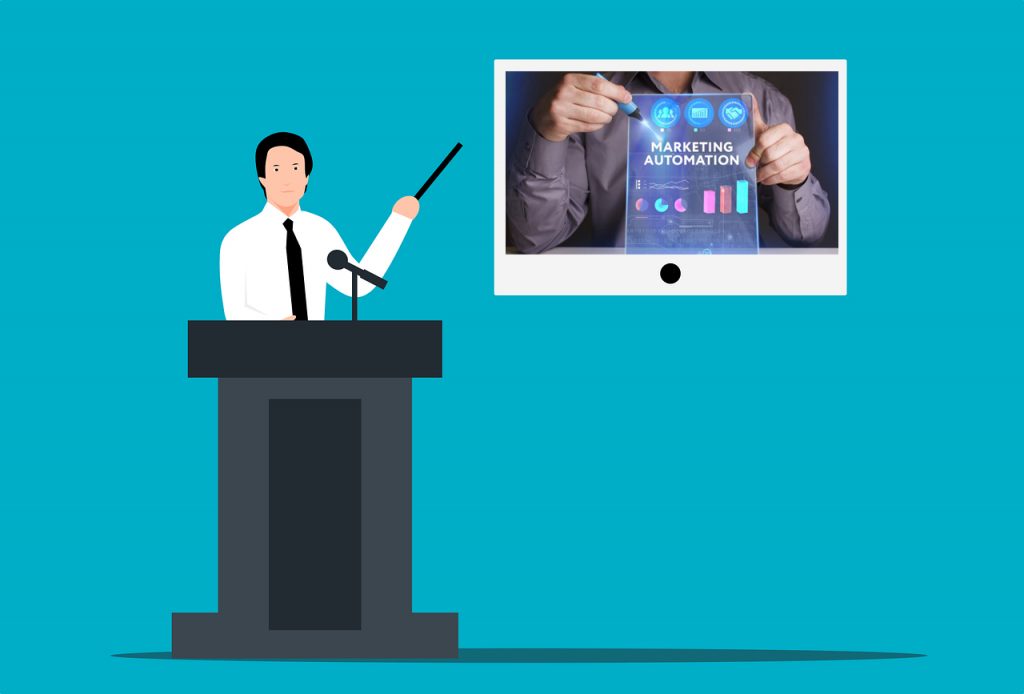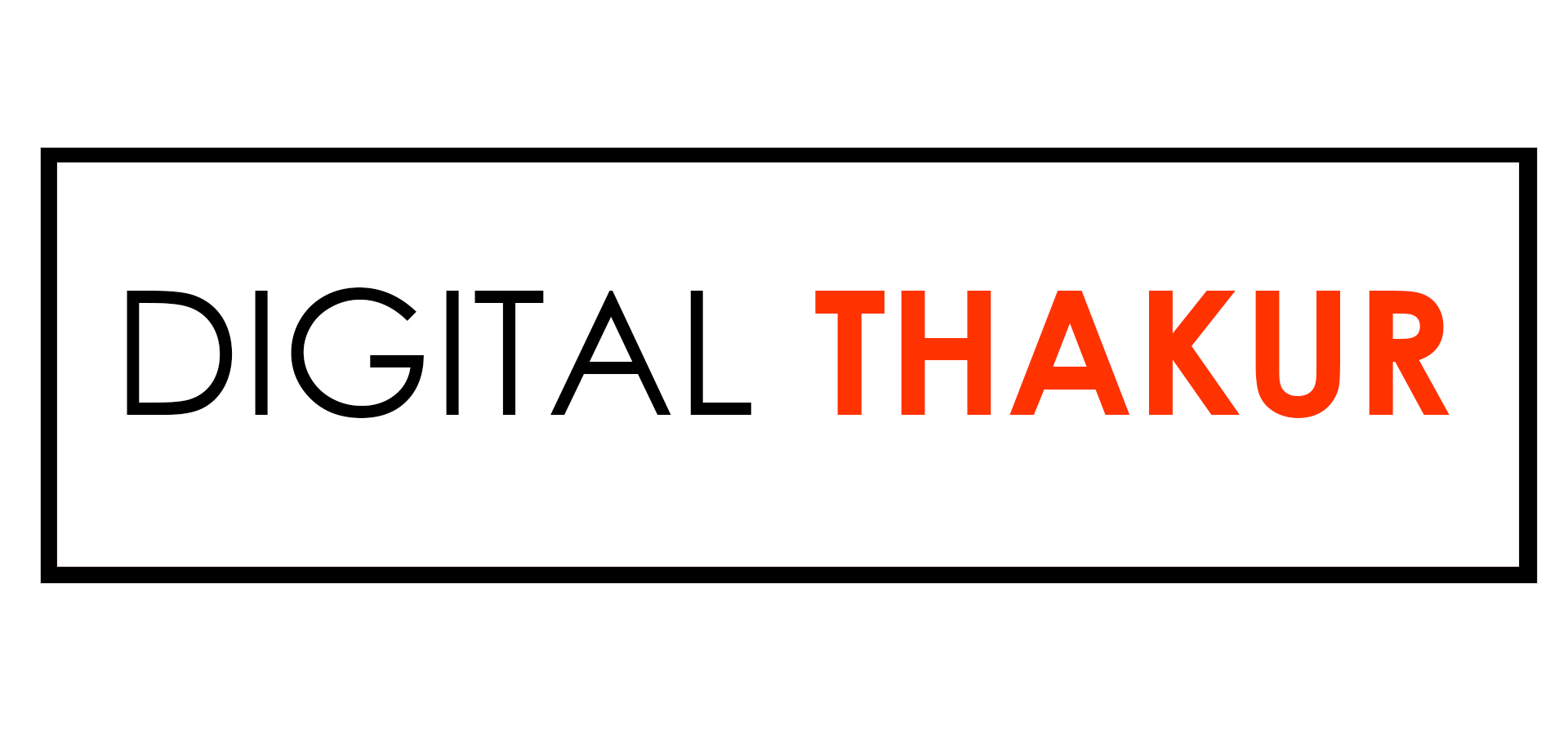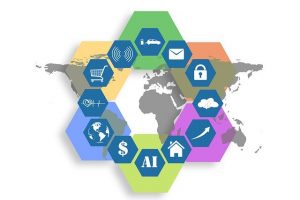
What Is Marketing Automation
The reasoning or guiding ideas that let marketing software take the role of client interactions handled by people or BTS business processes. Small company marketers may find that automation helps them implement their strategy while freeing up their time and resources. This technology works best when you already have an audience and a nurturing system, but it’s also a great way to attract new customers and generate leads.
Your business can accomplish using marketing automation software: Identify the practical advertising campaign components and adjust your optimization accordingly. You may choose which plan best matches your customers’ journey and which marketing automation platform should carry it out, saving you from having to zig every time a consumer zags.
To help automate your marketing and ensure you’re connecting with customers at every stage of their connection with your business, your strategy may include retargeting adverts, postcards, a/b testing, etc., and automated emails.
Marketing automation technologies are designed to gather and use marketing data to increase the efficacy and efficiency of your marketing operations. Marketing automation solutions may leverage data and trends to trigger lead-generation materials, send birthday emails, schedule social media posts, and more.
In marketing, repetitive tasks can take up a large portion of your time, making it challenging to pinpoint crucial hands-on functions that require your undivided focus. Marketing automation helps small business marketers execute their strategy without wasting time or resources. This technology works best when you already have an audience and want to apply a nurturing process, but it’s also a great way to entice new customers and generate leads.
Businesses may use marketing automation software to handle simple, repetitive tasks like automated emails, retargeting ads, postcards, a/b testing, and other activities that ensure you connect with customers at every step of their relationship with your business.
This article will cover the fundamentals of marketing automation, including its advantages, how it functions, and best practices for achieving the results you want.
What is marketing automation?
You may find new clients with the help of marketing automation, which also automates the process of bringing those leads to the point of sale. It automates procedures that move prospects closer to being approached directly by the sales team to close a deal and establish a long-term relationship. The information it gathers can have an impact on your marketing initiatives.
This is achieved via marketing automation, which significantly increases the efficiency of your sales funnels by swiftly turning a sizable number of leads into happy customers using various techniques.
For instance, early in the lead-nurturing process, education and awareness may be crucial. Marketing automation may deliver pertinent content that increases leads’ understanding of what they’re getting while fostering trust and respect for your business. When potential customers have honed down on the items they are interested in; you can get in touch with them using customised marketing that is highly targeted to the demographics that can make your business successful. Finally, a qualified, thorough, and well-understood lead is quickly delivered to the sales team when behaviour seen by the marketing automation system signals even more focused interest.
Why is marketing automation so valuable?
A crucial phase in the development of any organisation is lead generation. Your team will have more time to concentrate on overall strategy and cultivating prospects who show potential by automating several sales-related procedures. This results in more potential clients and consumers.
You could also get a broader, more complete view of potential customers’ behaviour via marketing automation. By employing behavioural tracking techniques like following a user’s path around your website, marketing automation software may help your marketing team identify a prospect’s interests and where they are in the buying lifecycle. Any follow-up may then be tailored to those action points.
Assume, for instance, that a particular buyer is looking at various products. This can suggest that they are still investigating and weighing their alternatives as they create a short list in the early stages of the purchasing process. If they later download white papers on just one subject, it can indicate that they have a more regional focus and are open to being contacted by a salesperson.
Automated lead scoring, qualifying, and prioritisation are possible when data from several touchpoints, including website visits and downloads, social media activity, and direct marketing, are combined. This, in turn, can support more significant marketing projects like:
- Using triggers to guide marketing messages
- Send out “drip-feed” emails infrequently to maintain interest.
- Customised emails
- Facebook or Twitter messages
Increase marketing ROI by giving leads top priority.
In addition to automating the lead-nurturing process, marketing automation software may help you define precise, objective progress metrics along the client lifecycle. Before now, a prospect’s readiness for sales depended on the individual marketer’s gut feeling; today, it may be based on previously specified and quantified results.
With such data at its foundation, marketing automation may help prioritise sales staff time, measure the effect of prospect touch points, and determine overall campaign effectiveness.
Additionally, there is no longer any room for speculation, especially when deciding whether to move a particular prospect from marketing to sales. Closed-loop data does assist you in accurately calculating your cost per opportunity and the ROI of your marketing campaigns.
What is marketing automation used for?
Marketing automation saves us time. Automating repetitive tasks and minimising human error help you get better results. You may spend your time on more strategic tasks like campaign strategy and design, goal setting, research, brand consistency, KPI measurement, and more rather than doing things by hand.
Many instantly think of email marketing automation when they hear the phrase “marketing automation.” However, it performs more functions than only automating email marketing. For instance, marketing automation software can assist in automating the subsequent tasks:
- Lead generation, lead nurturing and lead grading.
- Audience segmentation and targeting
- Cross-selling and upselling activities
- Strategies for customer loyalty and retention
- You may enhance your marketing and content campaigns with the support of analytics and data (that is, tweaking the subject headings or send times)
- A/B testing to identify the most successful headlines, offers, content, or visuals
You may also use marketing automation tools to enhance customer data and build more detailed client profiles. This data may be leveraged by providing tailored, personalised interactions across channels to enhance the customer experience (CX).
What are the benefits of marketing automation?
1. It helps you comprehend your customers better.
Customers like reliability. They place high importance on personalised service. When it comes to individualised attention, customers are more likely to frequent establishments where they are made to feel valued. You’ll never forget a birthday, anniversary, or VIP occasion using marketing automation. You never miss a chance to have a more in-depth conversation with your customers. Additionally, customers want guarantees that they are a priority. Giving your primary customers priority access to sales and events makes them feel unique and valued.
Your interactions with them are enriched and profitable by this personalization. Eighty per cent of customers are more likely to purchase from companies that offer individualised and relevant experiences, according to a 2018 poll.
Consumer loyalty is frequently increased by personalization. A 2017 survey found that 44% of respondents said that personalised interactions increased their likelihood of making another purchase from the company. Customers like it when companies deliver personalised messages rather than a sea of nameless clients.
2. It makes it possible for you to use complicated strategies.
Being strategic with your marketing communications involves more than simply connecting with your contacts; it also determines when it would be most advantageous to communicate with potential clients or consumers.
To do this, many organisations use drip campaigns, which include regularly sending out pre-written emails. However, automation tools provide marketers with the opportunity to think about and create workflows for carrying out more complex campaigns. In addition to creating emails that are delivered to recipients at the correct times, Mailchimp’s Customer Journey builder also enables you to manage, clean, and organise your audience based on interactions.
Regardless of your line of work, the objective is to constantly add value over time to a client to strengthen the relationship and their perception of your brand. Delivering personalised messages to various segments of your audience based on their interests, behaviours, and even data from your CRM software helps you to reach higher-quality contacts and make your campaigns more complicated (in combination with your plan). By synchronising such personalised messaging with your customers’ behaviours, you may be able to improve your customer relationship management.
3. It enables your workers to focus on work at a greater level.
Digital marketing is seeing an increase in automation technologies, which helps marketers work more efficiently. They can also concentrate on the more fun aspects of their jobs and the strategic side of lead nurturing and client retention by automating tedious, repetitive tasks that they would otherwise have to carry out manually.
For instance, when your team automatically plans and distributes marketing materials, you can concentrate on enhancing the client experience and attending to inquiries or addressing issues.
4. You can save time and money by using it.
Through process automation, marketing automation may help you save time, increase engagement, optimise your marketing, and increase your bottom line. Whether you have a hundred or millions of admirers, it gives each one of them personalised attention and meaningful, genuine messages that appear like you’re writing to a friend. For instance, you may open an email with the customer’s name using merge tags, or you can get in touch with them on noteworthy events like anniversaries.
How does marketing automation work?
With marketing automation, you may effectively and regularly promote your items on a digital platform. You may deal directly with your customers and be more productive in other areas by having someone else handle the tedious tasks for you.
However, correct data is necessary for automation. People provide you with essential information when they sign up for your list, make a purchase from you, or click on your advertisements.
Marketing automation software manages the bulk of tasks and procedures needed for digital marketing initiatives. Software frequently uses six processes:
- Obtain data on potential customers using apps, websites, emails, and other digital marketing activities.
- Based on the information gathered, pertinent and insightful content is created.
- It is essential to identify, target, and categorise potential customers.
- Develop marketing programmes that employ prospect segmentation to deliver individualised experiences across various digital marketing channels, including chat, social media, mobile, and email.
- Cross-channel workflows move clients through the sales funnel and nurture them until they become marketing-qualified prospects. Customer behaviours and predetermined time frames trigger them.
- Analyse and keep an eye on results. To increase marketing ROI, identify what isn’t working and make the necessary adjustments.
What can market automation offer to your business?
When we consider the challenges businesses face most frequently, we can see that generating leads and maintaining customer engagement are at the top of the list. In addition to these goals, organisations must deal with a flood of data challenging to use.
By utilising data and streamlining our processes, marketing automation software may aid in resolving these problems.
Most businesses view marketing automation as a middle-funnel tool great for nurturing prospects through automated email sequences. While email marketing is an excellent use of marketing automation, prospects and customers may face a disconnect from marketing to sales to customer service.
Prospects are forced through a poorly designed sales funnel that includes unrelated touchpoints and irrelevant content. Businesses consistently follow the same script rather than adapting to specific customer requests.
On the other hand, automated marketing techniques have to be applied throughout the client lifecycle. When skillfully used, marketing automation creates a fertile ground for solid, long-term customer relationships. Three key advantages of marketing automation for your business, when done correctly:
1. Workflow individualization
Your marketing strategy gains another data point from each activity of your prospects, revealing the current needs of your target market. Despite how helpful this information is, it is impossible to monitor these practices manually.
In contrast, businesses may use marketing automation software to combine various inputs across various channels to understand their customers’ needs thoroughly and provide the appropriate information at the proper time.
These procedures guide interested parties to helpful information, producing warm leads that may be strategically developed into clients. Marketing automation does not stop there, though. When the client is at the flywheel’s centre, businesses may continue to engage consumers through customised procedures that result in devoted, repeat customers who refer their friends and family.
2. Process streamlining
With effective operations that prioritise your consumers, unite your whole organisation. Develop procedures that many functional teams may utilise to reduce the amount of work required from customers at each stage of the journey. Dissolve barriers and work together to provide a consistent customer experience from the first point of contact to the moment of purchase.
Successful marketing automation eliminates the need for complex handoff procedures because everything is automatically stored in your central data warehouse, and internal workflows can assist you in prioritising tasks as they come up.
How does marketing automation affect your consumers?
Marketing automation has more benefits than just what it can do for your business. Solving common pain points in this digital-first, the multichannel era also helps your customers. The amount of information available to your clients makes it challenging to find the answers they need. Customers typically have a disjointed experience moving from team to team via channels and platforms when they contact your business. Marketing automation may reduce this friction by connecting groups, gathering data in an accessible way, and prioritising back-office tasks.
1. More relevant content
You can tailor the content each customer sees, thanks to marketing automation. Use buyer personas and behavioural targeting from advertising to email marketing to provide only the information each prospect or customer needs. Customers have limited time. Therefore automation helps by presenting the most critical information at the right time using the data you are already collecting.
2. Better and more prompt replies
Marketing automation helps businesses prioritise tasks and manage leads, enabling prompt responses to incoming inquiries. Front-line personnel may provide more proper support without having to look for it first, thanks to behavioural data stored in your CRM. Recognize previous consumer purchases and automate responses based on in-product behaviours or lifetime value.
3. Ensure seamless multi channel experiences.
Nobody likes to speak for themselves. That is why clients benefit so much from marketing automation. Your marketing software collects, stores, and uses data to provide customers with a customised experience, including pre-filled forms, emails that are suited to their requirements, and customer service that is as familiar as the nearby store. Using automation, customers have the same experience regardless of how they contact you.
What are the various types of marketing automation software?
You may find ten distinct definitions of marketing automation software if you read ten articles. Some reports list inventory management, pricing, distribution, revenue management, and competitive intelligence systems as examples of “marketing automation technologies.” Below is a list of several software categories that might be categorised as marketing automation.
- Client relationship management (CRM) is the administration of customer, order, and product data and the automation of sales activities.
- Sales force automation is software that automates sales operations, handles data, and offers insights.
- Email marketing simplifies the process of email marketing. To assess success, this entails developing lead generation forms and several reports.
- Social media marketing software automates the creation, scheduling, monitoring, and analytics of content on social media.
- Workflows that automate marketing processes and take the human factor out of them.
- The automated generation, scoring, and use of sales or marketing leads are known as lead management.
- Analytics, which makes data visually appealing and identifies patterns in the market and consumer data.
- Pricing is frequently used online and helps create competitive pricing systems. Examples include A/B testing and demand estimation.
- Across several digital channels, digital advertising and promotion improve and automate a large portion of ad creation.
- Customer loyalty, which automates crucial promotion and management processes for loyalty programmes.
There are several options for remedies. Some businesses offer discrete solutions that must be integrated into more complex systems. Many (though not all) of the features above are included in the all-in-one solutions that some businesses sell.
What are the best practices of marketing automation?
Although marketing automation takes little maintenance, you must work, especially during setup. Let’s examine some of the most effective marketing automation techniques.
1. Be clear about the goals you have in mind.
Develop goals for what you want to achieve using automation after gathering as much information as possible about your current marketing strategies. Then, you’ll be able to monitor your development. To acquire inspiration, you may also compile samples of effective marketing automation campaigns.
2. Take into account the audience segments you will use.
When marketing automation is as targeted as possible, it performs best. Your products or services—as well as your customer base—determine who you should target.
Perhaps you sell items that are interesting to people of various ages. In that case, you ought to segment according to demographics. Employees with different degrees of responsibility in their organisations may find your services intriguing. If so, split the information by professional level.
3. Create a flowchart.
The foundation of marketing automation is if-then logic. Decide when consumers should begin your process (for instance, by subscribing to your list), then choose when they should go forward.
For instance, if someone replies to your welcome email, they will be sent an offer based on what they did. If the person uses the request, they join a group that gets frequent deals, discounts, and so on.
4. Check every detail.
You may monitor the effectiveness of your marketing activities by using A/B testing. Try out several subject lines, images, and messages, and send times to determine what your audience responds to the best.
You may use the information from underperforming targeted messages to improve your subsequent campaigns. On the other hand, you may look at the traits that your successful campaigns shared and apply that knowledge to refine your following marketing initiatives.
How to get the maximum result out of marketing automation?
The best marketing automation combines technology, strategy, and consumer focus. It helps you provide highly personalised, pertinent content to nurture leads, converting prospects into happy customers and customers into ardent advocates.
Businesses should integrate technology throughout their operations to eliminate silos and combine teams with time-saving procedures to obtain the most out of marketing automation. Incorporating marketing automation with human interaction may create a flywheel that drives your business forward.
Start by putting the demands of your customers before those of your business. Create procedures to aid customers in moving from one touchpoint to the next and identify potential touchpoints that might benefit from marketing automation.
- To ensure every customer action is recorded as a data point, group contacts in a CRM that communicates with your marketing automation programme.
- Whether it’s instructional content, a salesperson, or a customer success check-in, use these data points to direct customers to the following step of their journey. The use of marketing automation is that it enables you to use this white-glove approach with a large number of customers all at once.
A solid marketing automation strategy prioritises duties and streamlines handoffs to bring your teams together. Until a lead is warm and prepared to be contacted by sales, the marketing team may control the contact information. At that point, automation assigns and notifies the salesperson. Customer success receives notification when a customer makes a purchase and has access to all prior communications and actions taken during the sales process. The process is not only quick and easy, but it also encourages long-term partnerships between the customer and the business.
How to succeed in marketing automation?
1. Recognize the sales process you use.
Using marketing automation will depend on your sales process. Since marketing automation automates every step of the intricate sales process, it is most advantageous to businesses with lengthy sales cycles and numerous interactions. However, it can still work with shorter sales cycles. They send emails to customers as a reminder, for instance, when they leave items in their basket but don’t complete the purchase. Understanding how your sales process transforms leads into customers is essential.
2. Recognize your target audience.
According to how your customers interact with your firm, marketing automation comprises tailoring your marketing funnel. You must first understand your target market’s demographics, needs, and behaviours to accomplish this.
3. Have a plan of action in place.
Businesses adept at marketing automation can guide clients to the steps they wish to take at each sales funnel stage. Before creating your marketing automation strategy, be sure you comprehend what your target audience wants.
4. Create the required materials.
Developing products that your customers can interact with is necessary for marketing automation—for instance, blog posts, videos, and eBooks. You may use this content in your marketing automation campaigns if you already have it. If not, you should begin by producing some content.
5. Keep everyone up to date.
Successful marketing automation techniques incorporate input from teams throughout your company. The sales team should inform marketing about the type of converted leads so that marketing can include this data in their lead scoring system. Customer service may provide marketing with information about the kinds of issues that customers are having in the meanwhile.
6. Implement your plan.
You are not finished until your marketing strategy has been put into action. You must review and test your system to ensure each element works as intended. Using data from metrics like click-through rates, conversions, time on page, and open rates, you may spot “black holes” where you are losing more customers than is necessary. A/B testing may be used to find strategies that work better.
How to choose the right market automation company for your business?
You must make sure that the marketing automation system you choose is the most excellent match for your business, just like you would with any other investment. You’ve probably heard of popular marketing automation technologies like Act!, HubSpot, Mailchimp, and Salesforce. To assist you in making your choice, keep an eye out for the following:
1. Functions
The marketing automation platform you choose must provide the functions you desire. Consider your motivations for using marketing automation, and make sure the solution you select advances those objectives.
2. Integrations
Software for marketing automation has to work with the applications you already have. Most marketing automation platforms provide a variety of connections, but you should confirm this before committing.
3. Training
It’s easy to use marketing automation if you get the hang of it. There is a learning curve, but the best marketing automation platforms will try to help you and your team get the most out of the software. This might come from an extensive knowledge base, video lectures, or even in-person instruction.
4. Consumer Assistance
The solution offered by customer support is correlated with instruction. Platforms for marketing automation with solid customer support capabilities will ensure you are not left in the dark if something goes wrong.
5. Scalability
This is crucial for small businesses in particular. Choose a marketing automation solution to support your expansion if you want to grow your firm. Most tools will let you change to a different plan as you add more customers.
6. Cost
Cost is the last key factor. The feature set you want may be expensive. Or would a more affordable choice be preferred? Avoid opening offers or hidden fees that would increase your payment once you fully engage with the organisation’s environment.
Final words
Marketing automation may be set up quickly regardless of the situation or sector. After deciding on your objectives, message, and the standards that will guide your workflow, you can start building enduring relationships with your clients.





